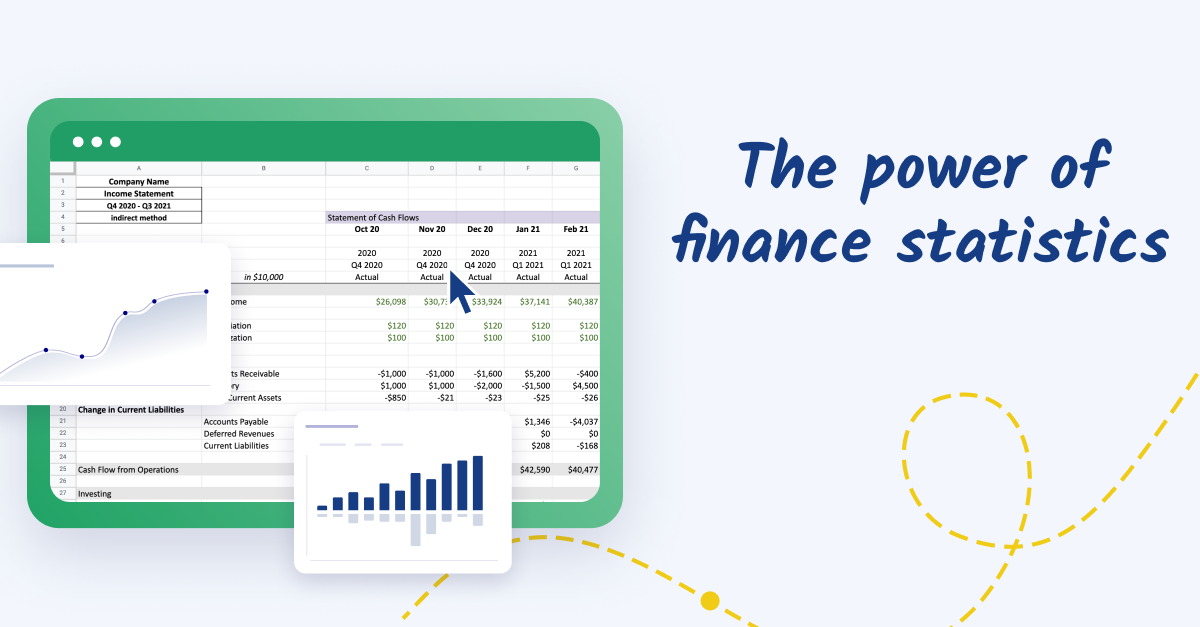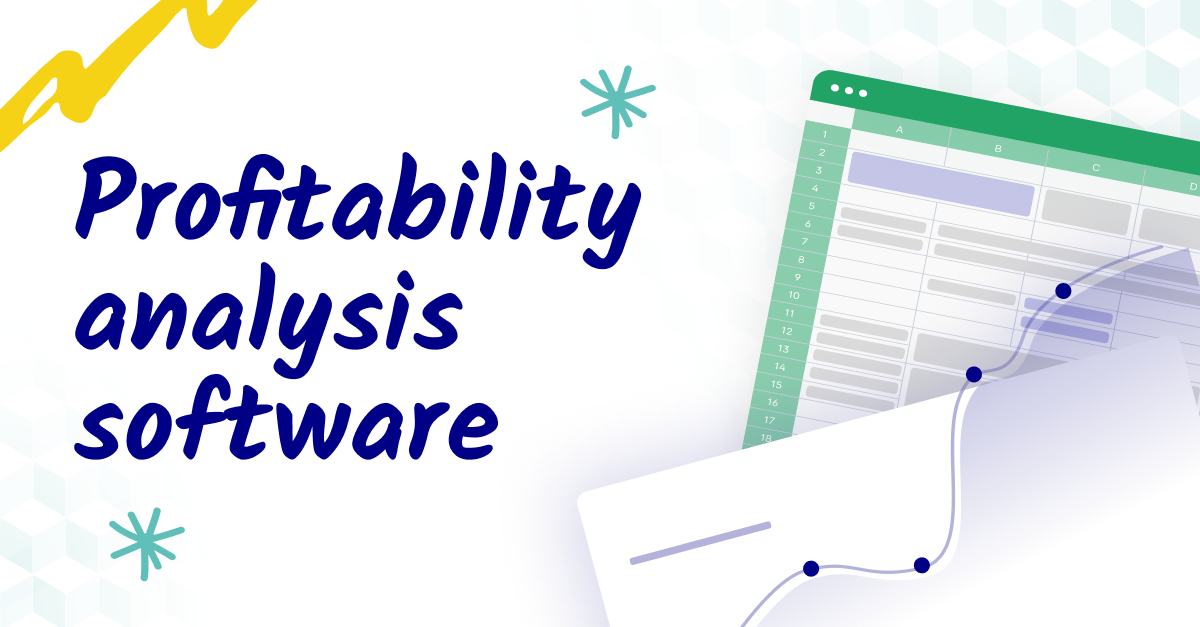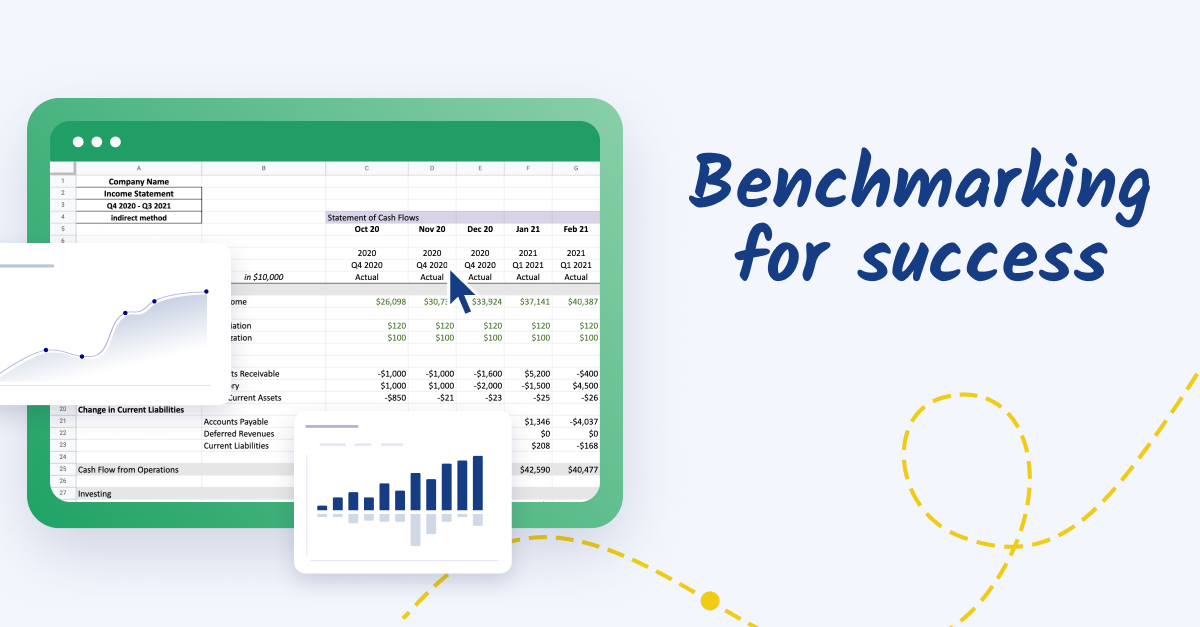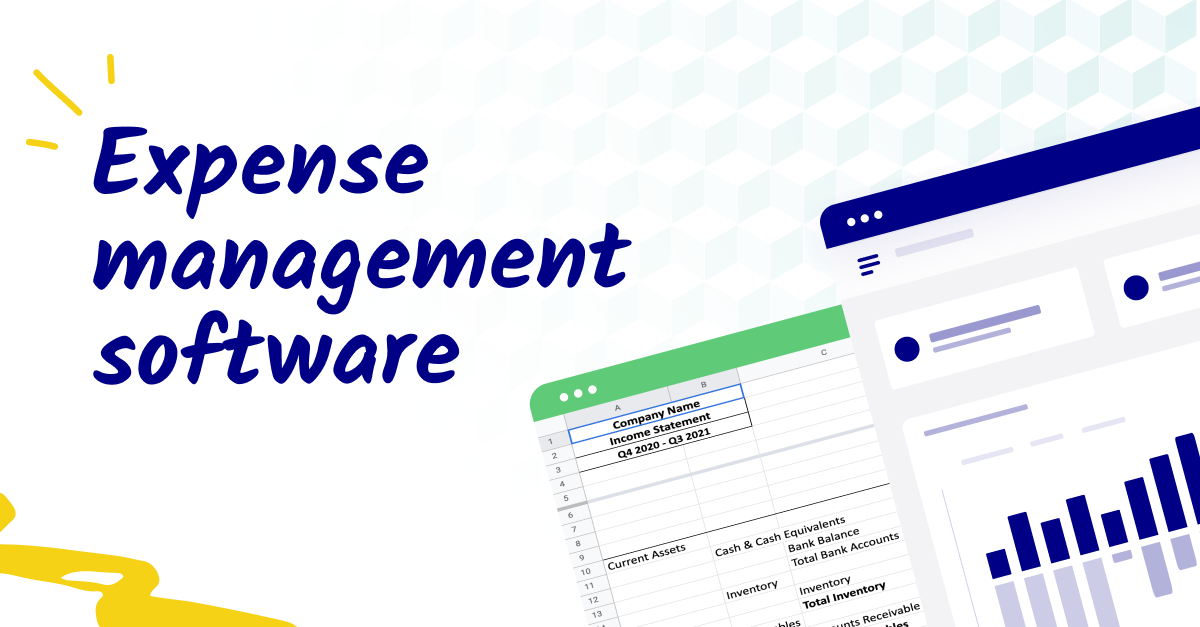Data in modern finance: why is it important?
In finance, data is the foundation of strategic decision-making. Financial statistics provide a clear picture of where your company stands and where it can go, informing everything from budget allocations to risk management and investment strategies.
With fluctuating markets and fast-changing economic conditions, it's no longer enough to rely on gut feelings or outdated methods. When you prioritize data-driven decision-making, you're able to anticipate market trends, assess the health of your operations, and respond proactively to financial challenges. You're empowered to build solid financial models that predict outcomes, optimize processes, and enhance profitability.
FP&A software can play a supportive role in this process by streamlining data analysis and improving accuracy (more on this later). But the true power lies in your ability to interpret and act on these financial insights effectively.
The question is, where should you begin?

Narrowing your focus: key finance statistics
The best place to start is identifying which metrics to focus on. With so much data available, it can be a real challenge to figure out which metrics are truly important for your business’s success.
Getting this right is key to meeting both operational and strategic objectives. These numbers help guide you through complicated financial decisions and strategy development, pointing out where to allocate resources, support growth plans, and reduce risks.
Here are some of the essential financial metrics every finance leader should keep an eye on:
- Cash Flow: This is the net amount of cash moving in and out of a business. If you have more cash coming in than going out, you’re in a good position to pay off debts, reinvest in your business, cover day-to-day expenses, and save for future challenges.
- Profit Margins: These include gross, operating, and net margins, and they show what percentage of your sales is profit after covering all your costs. Healthy profit margins mean you’re managing your costs well and your business is running efficiently.
- Return on Investment (ROI): ROI tells you how much money you make from an investment relative to its cost. It’s essential for evaluating how effective your investments are and deciding where to put your money next.
- Operating Expenses: These are the costs necessary to run your business day-to-day. Keeping a close eye on these helps you budget effectively and can pinpoint where you might cut costs.
- Debt-to-Equity Ratio (D/E): This ratio compares a company's total liabilities to its shareholder equity. It's a crucial indicator of the amount of leverage a company is using, with higher ratios suggesting higher risk.
- Current Ratio: An indicator of a company's liquidity, calculated as current assets divided by current liabilities. A higher current ratio indicates a stronger ability of a company to meet its short-term obligations.
- Inventory Turnover: This ratio shows how often a company’s inventory is sold and replaced over a period. A high turnover rate may indicate strong sales or ineffective buying, while a low rate may indicate weak sales or excess inventory.
- Accounts Receivable Turnover: This metric measures how efficiently a company collects on outstanding credit accounts. A higher turnover rate indicates that the company is effective at collecting its receivables, while a lower rate could suggest collection issues.
- Earnings Before Interest, Taxes, Depreciation, and Amortization (EBITDA): This measure provides insight into a company's operational profitability by excluding the effects of financing and accounting decisions.
- Net Profit Growth: This metric tracks the percentage growth in net profit over a specific period. It helps gauge the overall growth effectiveness and profitability improvements in a business.
- Working Capital: Represents the difference between a company’s current assets and current liabilities. Positive working capital indicates that a company can fund its current operations and invest in future activities.
Strategic data integration: how to enhance financial decision-making
Now you know which statistics to focus on. But even with this information, making the most of this data can be tough for many finance teams.
We already mentioned how the volume and complexity of data can be overwhelming, but the complications don't end there. Data is often scattered across different departments or systems, leading to inconsistency and inefficiency. Plus, without the right tools, it’s hard to analyze and interpret this data effectively.
This is where using the right technology, like FP&A software, can make a huge difference. It simplifies data analysis, improves accuracy, and makes data easier to handle, helping finance teams make smarter, quicker decisions.
Here’s how you can use it to effectively leverage finance statistics and propel your company forward:
- Centralize data management: Use technology to create a central hub that gathers and synchronizes data from various sources, providing a comprehensive view for holistic analysis. This centralized approach is essential for developing a clear and complete understanding of your company's financial health, supporting strategic decision-making.
- Ensure data accuracy: Implement systems that automatically check and verify the accuracy and consistency of financial data during integration. Accurate data is critical in finance, where even minor errors can lead to significant misjudgments and potential losses. This technology helps maintain the integrity of your financial reports.
- Automate data processes: Automate routine data collection, merging, and formatting tasks to speed up consolidation and reporting processes. Reducing manual involvement minimizes errors, saves time, and increases the reliability and efficiency of financial reporting.
- Easily conduct complex analysis: Deploy advanced tools provided by FP&A software for handling large datasets and performing complex analyses. Features like advanced analytics, dashboard visualizations, and predictive modeling enable finance teams to transition from traditional reporting to in-depth strategic analysis and forecasting.
- Focus on strategic initiatives: By streamlining and simplifying data management processes, technology allows finance teams to dedicate more time to strategic planning and decision-making. This shift enhances the overall effectiveness of financial operations and enables organizations to stay agile and competitive in their markets.

How to integrate data meaningfully into decision-making processes
Integrating data into decision-making processes is essential for organizations aiming to be data-driven, but it requires more than just collecting numbers and metrics. It involves transforming data into actionable insights that can directly influence strategic decisions and operational improvements.
Here’s how you can ensure that data integration is both meaningful and effective:
- Define decision-driving metrics: Start by identifying which metrics are critical for driving decisions within your organization (like the ones we listed above, for example). This step ensures that everyone knows what data is important and why, which helps in prioritizing data collection and analysis efforts.
- Establish data governance: Implement a strong data governance framework to ensure data quality and accessibility. This includes setting clear policies for data collection, storage, and sharing, as well as appointing responsible roles for managing this data. Good governance helps maintain data integrity and reliability, which is crucial for effective decision-making.
- Use cross-functional teams: Involve multiple departments in the data integration process. This approach ensures that the insights generated are comprehensive and take into account various perspectives, which is vital for making well-rounded decisions.
- Invest in the right tools: Deploy advanced analytics tools and platforms that can handle large datasets and complex analyses. Tools that offer real-time analytics and visual representation of data (like dashboards) can significantly enhance the speed and accuracy of decision-making.
- Training and culture: Cultivate a culture that values data-driven decision-making. Provide training to employees at all levels on how to interpret data and use it in their day-to-day work. Ensuring that employees are comfortable and skilled in using data tools and interpreting data will lead to more effective and widespread use of data insights.
- Feedback loops: Establish feedback mechanisms to evaluate the outcomes of decisions based on integrated data. This helps in understanding the effectiveness of data-driven decisions and provides opportunities for continuous improvement in data practices.
- Iterative process: Treat data integration as an iterative process. Regularly review and adjust how data is collected, analyzed, and utilized as the business environment and technology evolve. Continuous refinement ensures that the data integration process remains relevant and aligned with organizational goals.
By focusing on these areas, you can effectively integrate data into your decision-making processes, ensuring that decisions are informed, timely, and likely to lead to positive outcomes.
Conclusion: make the most of your financial statistics
By focusing on key financial metrics, ensuring data accuracy, and leveraging advanced FP&A tools, you can transform raw data into strategic insights. Taking advantage of these tips will not only enhance decision-making but also position your organization for sustained growth and success. Remember, in finance, informed decisions are your greatest asset.
Want to learn how Cube can help you make the most of your financial data? Request a free demo today.



.png)










